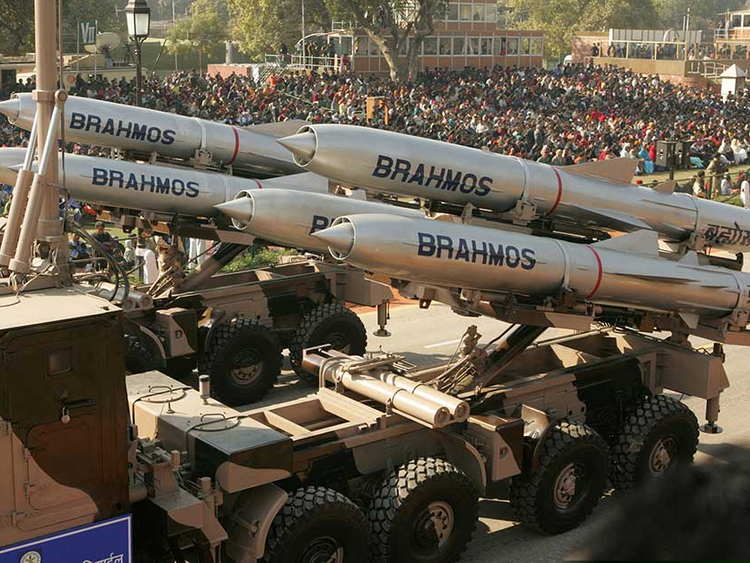
File photo: India's Brahmos supersonic cruise missiles, mounted on a truck, pass by during a full dress rehearsal for the Republic Day parade in New Delhi, India, January 23, 2006.Image Credit: REUTERS
The Philippines is poised to acquire what could be its first supersonic cruise missile after evaluations conducted by its military turned out positive feedback.
According to Defence Secretary Delfin Lorenzana, a contract signing for the acquisition of two batteries of the BrahMos, a cruise missile developed by India and Russia, is expected in the early part of 2020.
Earlier in October 2019, the Department of National Defence (DND) sent its officials to India to evaluate the BrahMos as the Philippines is looking for an effective missile system for intermediate range coastal defence purposes.
Currently, the country only have Israeli-made 155mm artillery batteries and short range missiles for coastal defence and, with neighbouring China improving its capabilities, the need for an effective cruise missile with “stand-off capabilities”, such as the BrahMos had become increasingly necessary to maintain deterrent.
Initially, six missiles mounted on two batteries will be procured.
The BrahMos version that will be acquired by the Philippines would be the ones mounted on land-based mobile launchers. Mock ups of these weaponry had recently been showcased in recent static displays at the Armed Forces of the Philippines headquarters in Camp Aguinaldo in suburban Quezon City.
Although the Philippines had tried to develop a home grown surface-to-surface missile system during the late 1960 to early 1970s, the country was not able to deploy such units in the field.
Failed Bongbong missiles
The ‘Bongbong’ missile, which was named after then President Ferdinand Marcos’ only son, failed in tests.
The weaponry was similar to the Russian unguided missile artillery, the ‘Katyusha’.
According to Lorenzana, impending acquisition of the BrahMos is critical for the country’s defence because for the first time, the Philippines will have such capabilities such as striking land-based or sea-borne targets at distances some 500km away.
Each unit of the BrahMos costs some $2.75 million and each mobile launcher houses three missiles per battery.
Lorenzana said that at the price-deterrent comparison, the BrahMos could turn out to be a good purchase.
“There is money for it [BrahMos missiles] as per our modernisation programme,” said.
Considered as the fastest cruise missile in service, the BrahMos was developed by India and Russia.
It uses “ramjets” to effectively extend its range while maintaining speed. Cruise missiles developed by other countries, including the United States are slower and operate at subsonic speeds.
https://gulfnews.com/world/asia/philippines/philippines-poised-to-acquire-brahmos-missiles-1.68535829

No comments:
Post a Comment
Note: Only a member of this blog may post a comment.